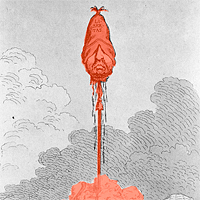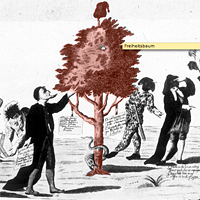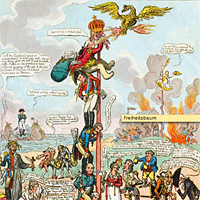























Visualisations of the French Revolution
The visualisation of the French Revolution is one of the most exciting and lively forms of visual communication to arise from the beginning of our modern times. HyperMedia has captured a corpus of images of over 1,000 items of graphical prints. It contains documentary images as well as complex personifications. This variety of image type and the disparate forms of visualisation are captured in numerous groups with functions enabling comparisons to be made.
The re-formation of the rhetoric of images using irony and satire at a key time of art history has been reconstructed using meaningful transformations of detail. More effective than with linear representations, users can now research the multitude of interdependencies.
The new person of the revolution, as defined in this transition period, develops independent images of roles and mentalities within a broader public through the collective handling of symbols. The task of the images is to visually convey myths in form that is generally comprehensible. The revolutionary, often presented as sansculottes (the working class radicals of the Revolution), was both a participant within the events as well as a recipient of the graphic images of the self-same events: new production and distribution methods at the time facilitated their dissemination as a form of mass media.
HyperMedia aims to reconstruct the argumentative strategies of the image propaganda as it existing in France at this time and to illustrate exchange, particularly with England. Especially in this age of revolutionary war and the English-French rivalry, the propaganda war engaged through the spread of images was not too dissimilar to the actual exchange on the battlefields. The HyperImage Reader provides a virtual network of images on key motives and concepts of revolution in the context of the emergence of a revolutionary language of images.
Project Director: Prof. Dr. Hubertus Kohle
Institute of Art History, LMU Munich
Zentnerstrasse 31, D - 80798 Munich
Phone +49 (0)89 2180 5317 | Fax +49 (0)89 2180 5316
hubertus.kohle@lrz.uni-muenchen.de
Contents: Martin Höppl, Fabian Bross